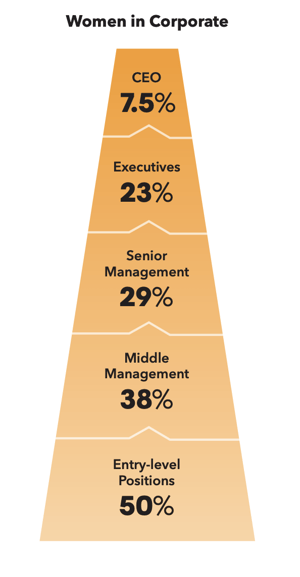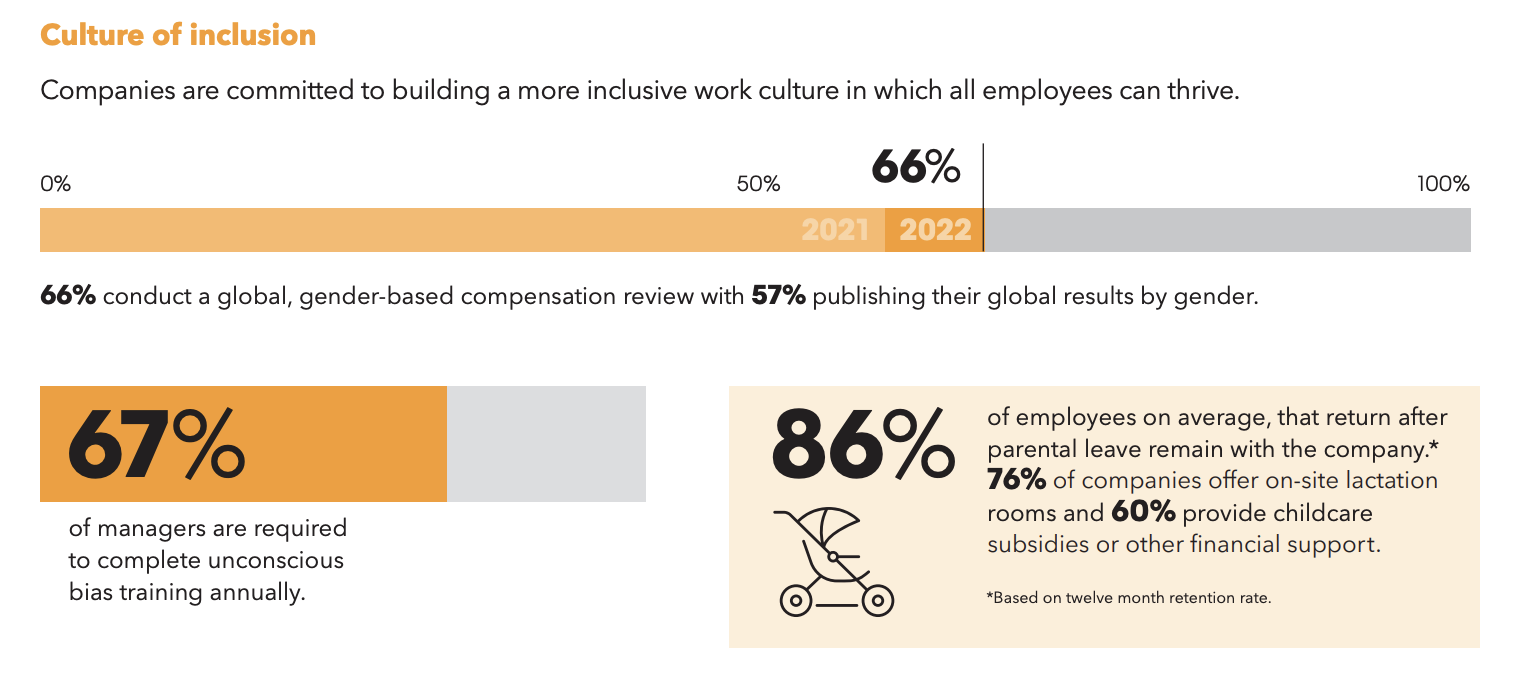People all around the world celebrate March 8th as International Women’s Day. It is an important day to celebrate women’s achievements, raise awareness about gender bias, and celebrate equality. In line with that, Bloomberg recently shared their latest Gender-Equality Index (GEI) Insights, where they detail out the state of gender equality in companies around the world.
GEI measures the state of gender equality based on five key pillars, namely with five key pillars of the reporting framework; namely female leadership & talent pipeline, equal pay & gender pay parity, inclusive culture, anti-sexual harassment policies, and pro-women brand. a wide-ranging and comprehensive look at how companies around the world are investing in gender equality and diversity in the workplace, the supply chain, and in the communities in which they operate. In 2022, the index comprises 418 companies with a combined market capitalization of USD16 trillion headquartered in 45 countries and regions across 11 sectors. The aim of the report is to promote transparency in gender data reporting, and hence improve diversity and equality practices in workplaces around the world in the long run.
Here are our 3 most interesting findings from the GEI Insights report:
1. Representation of women in leadership positions has increased by 14% year on year
GEI data suggests that a higher concentration of women in senior management roles is a significant influence on increasing female representation in the pipeline. This is great news since the report also states that corporations that have a female CEO tend to have higher representation of women at all levels of the firm.

It’s especially important as diverse gender representations offer diversity of thoughts and innovations that directly impact the company’s bottom line. McKinsey’s research confirms this as they stated that companies in the top quartile for gender diversity on executive teams were 21 percent more likely to have above-average profitability than companies in the fourth quartile.
2. Year on year, the pay gap persists
Pay is a critical component in gender equality in the workplace. With 62% average score in equal pay & gender pay parity, work still has to be done to minimize the gap. Possible factors could include education level, occupation segregation (men tend to be in higher-paying occupations, while women hold the majority of positions in lower-paying roles) and little to no work experience, from women leaving the workforce to take on traditional caregiving roles in the family.
Economists predict that the average female worker will earn about 76 cents for every dollar the average male worker makes, and it will take more than 10 years for the wage gap to close to what it was before the pandemic.
3. Inclusive culture score increased by 15% year on year
Inclusive culture refers to a sense of belonging, whether an individual feels valued and is being provided with equal opportunities in the workplace. Positive trends are observed in the average inclusive culture score, with a significant increase of 15% from Year 2021 - Financials, Communications and Technology sectors leading the field.

A diverse workplace is an important asset, as it acknowledges each individual’s strengths and the potential they bring. Companies that value D&I are often perceived as better employers, considering that employees want their employer to accept all backgrounds and to treat them fairly regardless. Not only will it help in retention, it also improves employee morale and productivity.
Over the years, we can see that progress has been made. From the increase of women in the paid workforce since the past century, to the rise of women leaders championing diversity and inclusion, it is a good time to celebrate what has been achieved and the endless possibilities that the future holds.



 .
. 